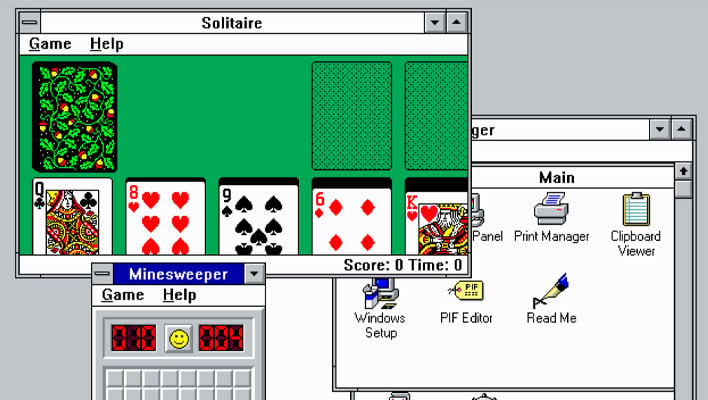Windows 3.1 Turns 30 Years Old, Take It For A Spin In Your Browser To Celebrate

Windows 3.1 turned 30 years old this month and if you were around when it came out, don't forget to take your pain pills for your back. I'm reminding myself as much as anyone else—my roots in computing date back even further, to the era of the Commodore 64 and later MS-DOS, both of which preceded Windows 3.1 with its fancy (for the time) GUI.
Microsoft released Windows 3.1 this month in 1992, the same year Bill Clinton became president, Kris Kross made everyone Jump, Jump, and Jack Nicholson famously angrily screamed, "You can't handle the truth!" in A Few Good Men. For more perspective, a gallon of gas wasn't much more than a buck ($1.13), and the first PowerPC came out.
Check out a couple of commercials for Windows 3.1 (one in English, one in Japanese)...
Windows 3.1 wasn't the most transformative iteration of Windows, as its predecessor (Windows 3.0) had already introduced an improved GUI to rival the Macintosh. But it did add some polish, such as a TrueType font system (a huge deal for publishers) and the ability to drag and drop icons. And though short lived before it was replaced, Windows 3.1 was a big success for Microsoft, selling 3 million copies in just a couple of months.
Back in the day, you need a PC with 1MB of RAM to run Windows 3.1. You also would have been wise to pair it with a 386 processor (it would run on a 286 system, but not particularly well, especially in 386 Enhanced Mode). And if you splurged on a CD-ROM drive (expensive at the time), this was the first version of Windows to optionally ship on CD (in addition to good old fashioned floppy disks).
The system Registry that we sometimes brave today is another feature introduced in Windows 3.1. It's evolved since then, but it's pretty remarkable that it remains a key part of Windows three decades later.
If you never experienced Windows 3.1 or want to a take a trip back memory lane, there are several places on the web where you can load up the now-ancient OS in your browser. I lean towards PCjs, which also gives you the flexibility to test run different PCs and settings (as well as test run other older versions of Windows dating back to Windows 95).

